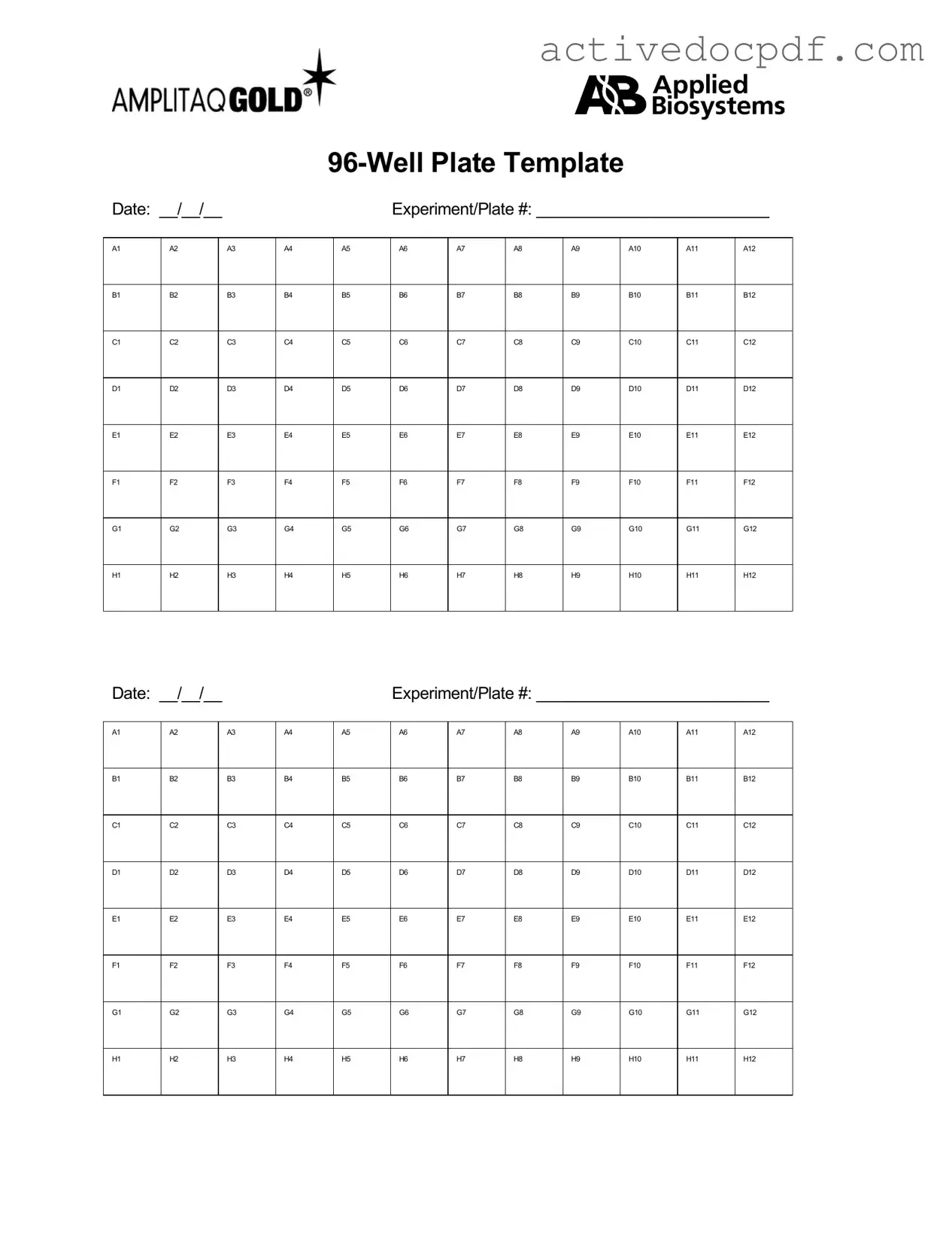The 96 Well form is a standardized document used in various scientific and research settings. It typically helps in organizing and recording data from experiments conducted in a 96-well plate format. This form ensures consistency and accuracy in data collection.
This form is primarily intended for researchers, scientists, and laboratory technicians who work with 96-well plates. It is useful for anyone involved in experiments that require systematic data recording.
Filling out the form involves several steps:
-
Identify the experiment you are conducting.
-
Label each well according to the parameters of your study.
-
Record any relevant data, such as sample IDs, concentrations, or time points.
-
Double-check for accuracy before finalizing the form.
Yes, the form can be modified to suit your specific needs. You may add additional columns or rows if required, but ensure that any changes maintain clarity and usability.
Many institutions provide a digital version of the 96 Well form. You can usually find it on your organization’s intranet or laboratory management software. Digital versions often include features like automatic calculations and data validation.
If you make a mistake, it’s important to correct it promptly. You can cross out the error and write the correct information next to it. Alternatively, if it’s a digital form, you can simply edit the entry. Always ensure that the final data is clear and legible.
Completed forms should be stored securely. If it’s a paper form, keep it in a designated file or binder in a safe location. For digital forms, save them in a secure folder on your computer or cloud storage, ensuring that they are backed up regularly.
If you have questions or need assistance, reach out to your supervisor or laboratory manager. They can provide guidance and support. Additionally, technical support may be available through your institution’s IT department if you are using a digital version.
Some common errors include:
-
Inaccurate labeling of wells.
-
Failing to record data consistently.
-
Overwriting previous entries without noting the changes.
-
Not double-checking for typos or calculation errors.
The frequency of use depends on your research activities. If you regularly conduct experiments using a 96-well plate, you should use the form each time to ensure thorough documentation. Consistent use promotes better data management and analysis.
